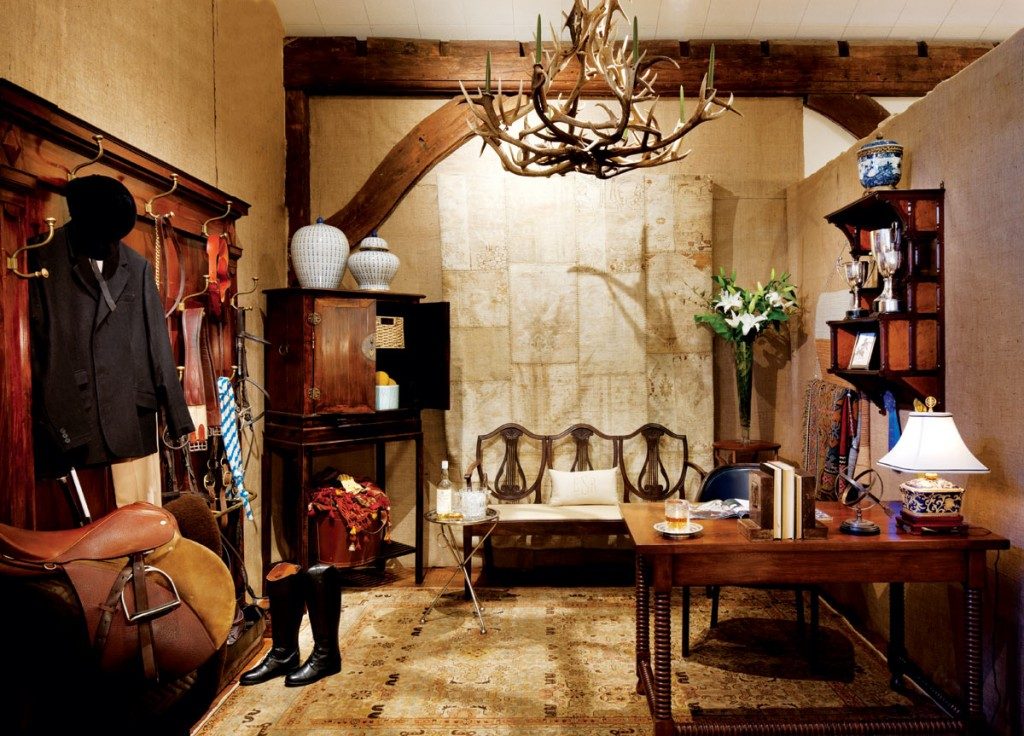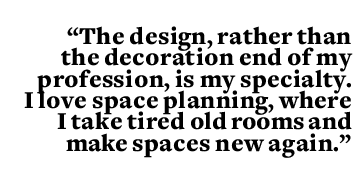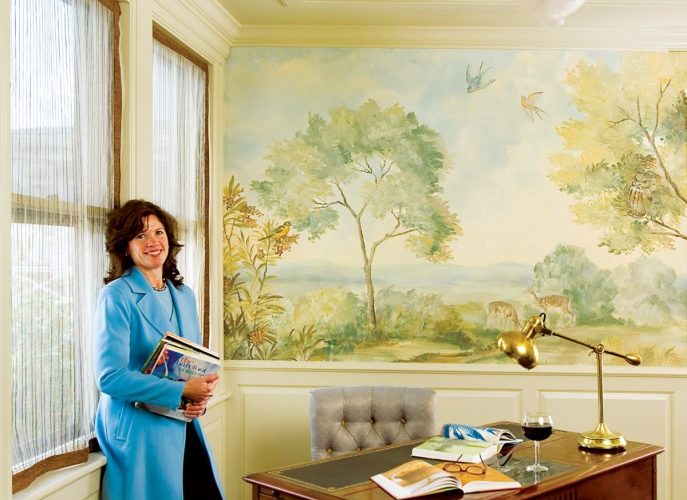For The Wenham Museum’s annual design show, Beverly interior designer Pat Finn created a horse lover’s dream tack room, ditching practicality for panache. by Regina Cole – Photograph by Greg Premru
Pat Finn was stumped. She had been looking for inspiration for an exhibit at the Wenham Museum’s 2012 North Shore Design Show and was stuck until one day, she realized that inspiration surrounded her every time she left her Beverly Farms home. “I found [inspiration] driving between my home and the museum in the form of all those beautiful horses grazing along the way,” says the principal designer of Beverly’s Finn-Martens Design.
The Wenham Museum celebrates the history and culture of the North Shore, making an equestrian-inspired theme a natural given the sport’s deep roots in the area. The Myopia Hunt Club, located on Bay Road in South Hamilton, was founded in 1882, and the Pine Tree Equestrian Center of Beverly Farms was founded the year before. Between them lie miles of grassy fields populated by some of the luckiest of domestic animals, carefully bred equines who live a luxurious life in Essex County’s famous horse country.
“Pine Tree Equestrian Center is located just down the road from our home; I enjoy the view out my window of one of their horse paddocks,” says Finn. Seeing the horses grazing there led her to envision her exhibit as a tack room. “The irony is, I don’t ride,” she says, laughing.
But Finn pictured an idealized space that represents the culture of the horse as it has lived on the North Shore. Against a backdrop of stained timbers that form part of the museum’s display space, she created a refined, evocative room redolent of well-kept leather, gently patinated furniture, and allusions to the area’s past.
“For me, the ideal tack room would be a reflection of the magnificent animals that are cared for in the adjacent barn: chestnut-colored woods and leather, steel polished to a shine, furnishings and rugs that show they are as sturdy as they are beautiful,” Finn says.
Finn admits to some artistic license. “All these items do not appear in a real tack room,” she laughs. “A real tack room probably would not employ a William IV mahogany coat rack to hang bridles and hold riding crops. And you probably wouldn’t find an antique cabinet holding salt, saddle soap, and creams, or a celadon vase for sponges.”
Finn did not stop at equestrian historical allusions; a Chinese 19th-century Jumu cabinet on a more recently built stand is topped with Chinese porcelain from the designer’s own collection, a direct reference to the North Shore’s seafaring history. It is the rare area historic house without at least one piece of Canton or 19th-century blue-and-white Asian porcelain. And, since the days of the China Trade, the North Shore has been partial to furniture from the Far East.
Â

Pat Finn’s tack room exhibit
Â
“I am a big fan of Asian design,” says Finn. “I love the simple elegance, symmetry, and scale. And for an absolutely timeless look, nothing beats it. “For me, the best design is a mix of textures: burlap on the walls, beautiful wood, leather, and just a little bit of shine.”
Other pieces in the “tack room” include an early-19th-century Italian Neoclassic walnut settee, an American 1870s Eastlake trophy shelf, and a Carlton desk with barley-twist legs. “The rugs, which were provided by Landry & Arcari, are both antiques,” Finn explains. “They lend the feeling I wanted to have for the space.”

A Persian Tabriz carpet covers the room’s floor. “It’s from the 1920s. I’m crazy for blue and brown together,”she says. “It is an unusual color combination in an Oriental rug. It is quiet and a beautiful way to ground the room without calling attention.” That kind of modest discretion is a famous aesthetic characteristic of the North Shore’s horse country. The other carpet is displayed on the wall. “This is a Turkish semi-antique decorative patchwork rug,” Finn says. “[Artisans] cut up old rugs, stitch them together, then bleach them to take the color out.” The result is a refined, subtle wall covering that forms the backdrop to the designer’s composition. Accent pieces include a leather bucket serving as a magazine holder and a steel tripod drinks table.
Finn had no difficulty in finding materials for her exhibit. Area antiques dealers such as Andrew Spindler and David Neligan provided the antique furniture, while the Pine Tree Equestrian Center lent tack. Ipswich’s Equestrian Shop broke out glamorous new gear, including the saddle, saddle rack, brushes, riding attire, and all other equestrian furnishings. Overlooking the entire composition is an American elk horn chandelier that dates to the mid-20th century. “No animals were harmed in the production of this chandelier!” Finn says, rushing to explain that, contrary to animal lovers’ fears, harvesting elk horn is done after the animal sheds it. “They actually shed them each year, so the chandelier is a completely benign object,” she adds. “I would never dream of using an animal hide for decor, but the elk horns are like shells on the beach-the animal is done with them.”
Finn founded her firm 11 years ago. Located on Beverly’s Front Street, it specializes in residential interiors. “I especially love to renovate kitchens and baths,” she says. “The design, rather than the decoration end of my profession, is my specialty. I love space planning, where I take tired old rooms and make spaces new again.”
Although she’s the first to admit that her fanciful tack room isn’t a functional space, she suggests that an equestrian theme can inspire area homeowners. Leather and old wood are always stylish and attractive, she points out, while blue-and-white Asian ceramics have never gone out of style and suit every decor. As for that elk horn chandelier, Finn says, “If you have a living room with a grand fireplace and beams in the ceiling, it would be simply beautiful.”
Â

